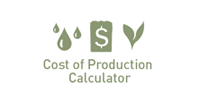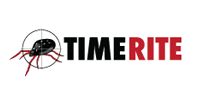Week 49 - June 2019
Eastern Market Indicator (EMI)
Eastern Market Indicator (EMI)
Microns
AWEX Auction Micron Price Guides
Sales held Wed 5th Jun & Thu 6th Jun 2019
Offering (Aust. Only)
Offering (Aust. Only)
Sales Week 49: 7th June 2019
Currency Movements
Currency Movements
Sales Week 49: 7th June 2019
Forecast
Forecast
Scheduled Australian Wool Auction Sales
AWI Commentary
Following the strong gains posted last week, Australian wool auctions regressed this series to post losses across most of the offering. The best end of the Merino fleece offering and the broadest crossbred fleece were the only sectors remaining unaffected at similar trading quotes. Price levels drifted by a general 30ac to 40ac clean/kg as buyers became more hesitant as the sales progressed and the cheaper levels appeared more prevalent.
The Australian Wool Exchange (AWEX) Eastern Market Indicator (EMI) reduced 1.22% or 23ac to close the week at 1864ac clean/kg, which is 4.5% under the seasonal average of 1951ac. In US Dollar (USD) terms the EMI contraction was limited to just 0.56% or 8usc to 1300usc clean/kg due to the AUD v USD foreign exchange (forex) rate strengthening by 0.7%. This 1300usc level now sits almost 7% lower than the current season average of 1397usc.
Competition at auction sales in Eastern Australia (Fremantle no sale) was again somewhat hampered by the lack of the “normal” participation rates of the big two Chinese trading indents. Counteracting this though was the positive purchase activity of the two largest Chinese top makers who topped buying lists and showed no signs of weakening in their buying intent. Strong support for the market also came from our local traders who also took the opportunity to pick the eyes out of the selection.
Perhaps the largest influence on the cheapening market this week was the almost non-existent competition against one of the Chinese top makers on the numerous sale lots exhibiting low yield. Lots showing a yield of around 55% dry and less were sold under hard auction conditions whereby just the single buyer was interested. As the price levels dropped, this negative sentiment flowed through to most other sections.
Within the Merino fleece segment, the price story was a two tiered affair. The better specifications sale lots with good (>64% dry) yields held onto their established levels well, whilst any sale lots of lesser yield or lesser specifications became exponentially cheaper as the week progressed. By weeks end, wools finer than 18.5micron, levels fell away 70ac on the lower end types and broader than 18.5 micron up to 50ac reductions occurred.
Merino skirtings traded to an almost identical manner to their fleece counterparts. Crossbreds finer than 29 micron eased 10ac whilst broader wools managed to settle at levels 5ac higher. Cardings continued their annus horribilis and dropped a further 30ac and saw the Melbourne MC indicator slip under the 1000ac mark to 992ac, which is down from 1490ac at the start of the season.
Next week sees Fremantle return to auction selling and a national offering of just under 30,000 bales is scheduled. Monday is a public holiday in Australia so we have shortened selling week.
AWTA Key Test Data May 2019
- The monthly comparisons of total weight for May 2019 compared with the same month last season show 17.3% less weight tested.
- The progressive comparison of total weight for July 2018 to May 2019 compared with the same period as last season, shows a 10.9% less weight of wool tested.
- AWTA Ltd has tested 302.1 mkg (million kilograms) this season compared with 339.2 mkg for the equivalent period last season.
Wool forwards report - SA (Southern Aurora) Markets
The rollercoaster continued for the spot auction as dwindling demand and diminishing consumer confidence saw the market give back the majority of last week’s gains. Modest volumes went through the forward markets with the majority of the action being trade focused. Exporters and processors were balancing their positions as growers tended to stay on the fence.
The forward discounts have increased marginally with the market seeing spring supply outstripping demand. Trading levels still remained in the upper quartile (75%) of prices for the last four years. 21.0 microns traded down to 2080 for September and 2050 for October and November. Bidding fell away towards the end of the week with closing spring levels dipping below 2000.
We expect continued volatility in the spot market with tight supply until the new season. Short term rallies may provide some opportunities for growers to hedge. We expect some activity in the September to December window around the 2040 level for 19.0 micron and 2000 for 21.0 micron.
The risk profile remains high. Global confidence continues to wane. While direct tariffs are yet to be placed on apparel goods the current trade war is impacting negatively on Chinese processors. Any easing of these tensions will help stabilise the forward market.
AUD Commentary - SA (Southern Aurora) Markets
It was a huge news week economically for Australia, but remarkably the Australian Dollar range was remarkably tight, as we opened Monday on the low at .6926 then rallied mid-week to a high of .7008 before sliding into Friday at .6978.
On Tuesday, the Reserve Bank of Australia cut its official cash rate by 0.25% to a record low of 1.25%, the first reduction since August 2016, with Governor Philip Lowe saying the move would support the economy, create more jobs and bring inflation to target, the bank also said debt, low wages and falling houses prices were weighing on growth.
Meanwhile in a surprise statement the U.S Federal Reserve Chairman Jerome Powell hinted that there maybe even be a U.S Rate cut this year when he said the Fed would “act as appropriate to sustain economic expansion”. The slowdown in China marginally affected Australian Exports as the surplus fell to A$4.87 billion in April against the forecast A$5.0 billion, nonetheless, the surplus remained around the record level.
Technically the AUD is trapped in a tight sideways trading band, having failed to break up through .7008 resistance this week, as well the AUD is well supported at lower levels. Support is seen at .6920, then .6860 then .6008, while overhead resistance is at .7210 the .7312. In the short term we feel the AUD will trade up towards resistance, however the bigger picture bias is for a lower AUD.












